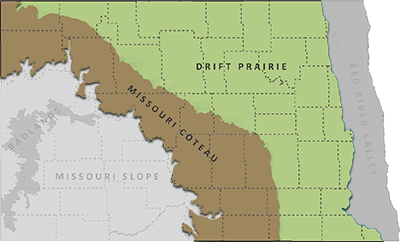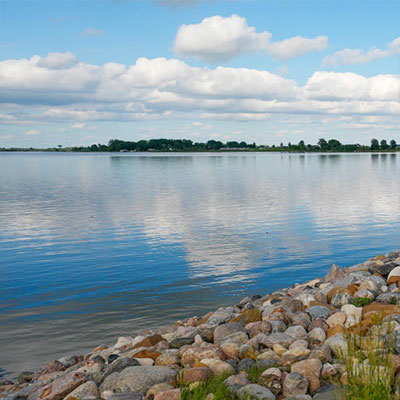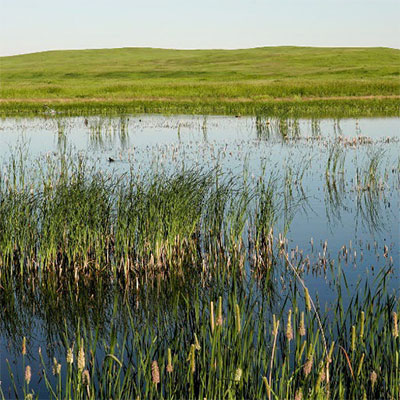Ruddy Turnstone

NDGF
L 9.5”, WS 21”, 3.9 oz. Breeding/spring plumage: stocky body, upperparts rufous with black patches, bright orange legs. Fall/nonbreeding plumage: duller brown, orange legs.
Status in North Dakota
Migrates through North Dakota primarily in the spring, early May to early June. Limited occurrence in the fall, mid-July through August.
Reason for SWAP Designation
Regionally or globally imperiled, at-risk based on expert review (SGCN a., c.).
The peak week for Ruddy Turnstone migration in ND (~24-May) hosts >10% (10.88) of the global population.
Holarctic, large population and wide distribution.
Concern for the species has been elevated in recent years.
Threats
Loss and degradation of wetlands, drainage and wetland consolidation.
Loss of habitat on the breeding and wintering grounds and amplified effects of climate change in arctic and coastal habitats.
Classified as climate-endangered, Ruddy Turnstone is projected to lose more than half of its current distribution by 2050, with no net gains of new areas (Audubon).
Hyperabundant geese populations alter tundra habitat and may limit the availability of nesting habitat for articbreeding shorebirds.
Coastal development (urban and industry sprawl), coastal erosion, storm surges, oil or industrial effluent spills, impaired water quality and microplastics are threats to wintering habitat.
Increasing applications of agrochemicals and adverse impacts to water quality, the wetland vegetative community, and the aquatic invertebrate community.
More frequent or intense harmful algal blooms.
Aquatic nuisance species spreading and damaging wetland ecosystems.
Research and Monitoring
Habitat requirements and demographic studies have been broadly researched on the breeding grounds.
Information lacking on migration strategies, stopover sites, and wintering behaviors.
Multiple large-scale shorebird monitoring programs are key sources of information on distribution and population trends.
However, minimal focus has been directed at research or monitoring migrant shorebirds in ND.
Management Recommendations
- Maintain wetland complexes.
- Conserve shallow, working wetlands in cropland.
- Plant vegetative buffer strips around wetlands in cropland.
- Identify and target high priority landscapes, habitats, and stopover sites for protection.




